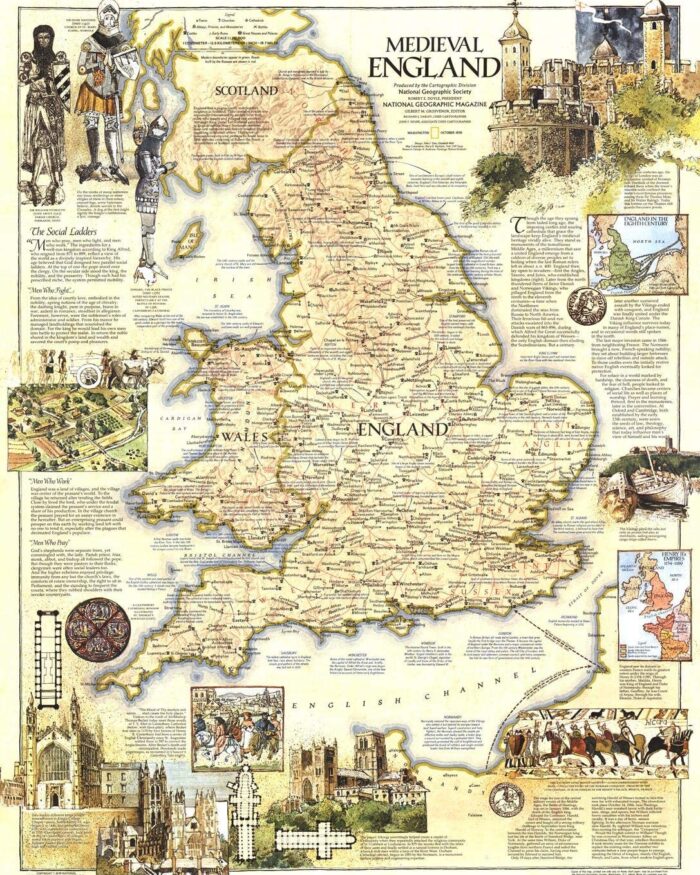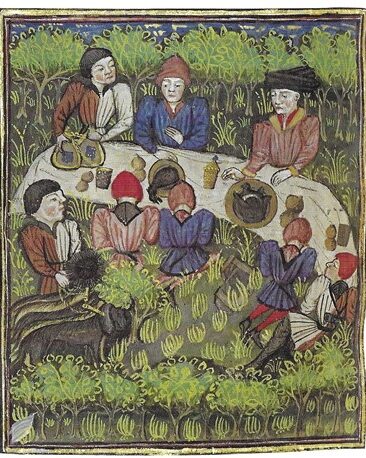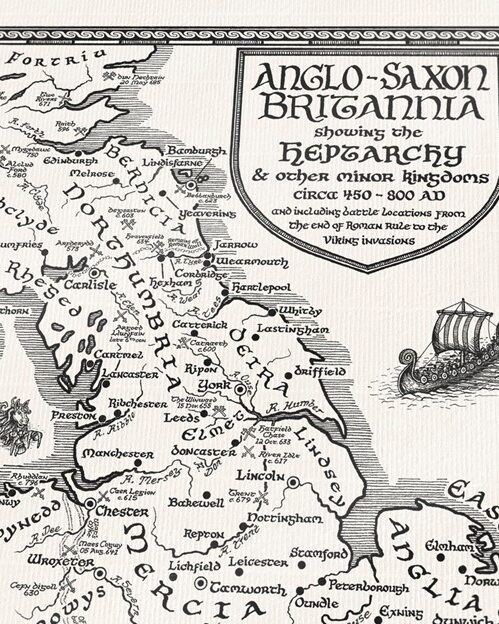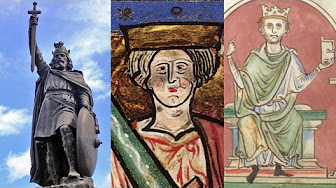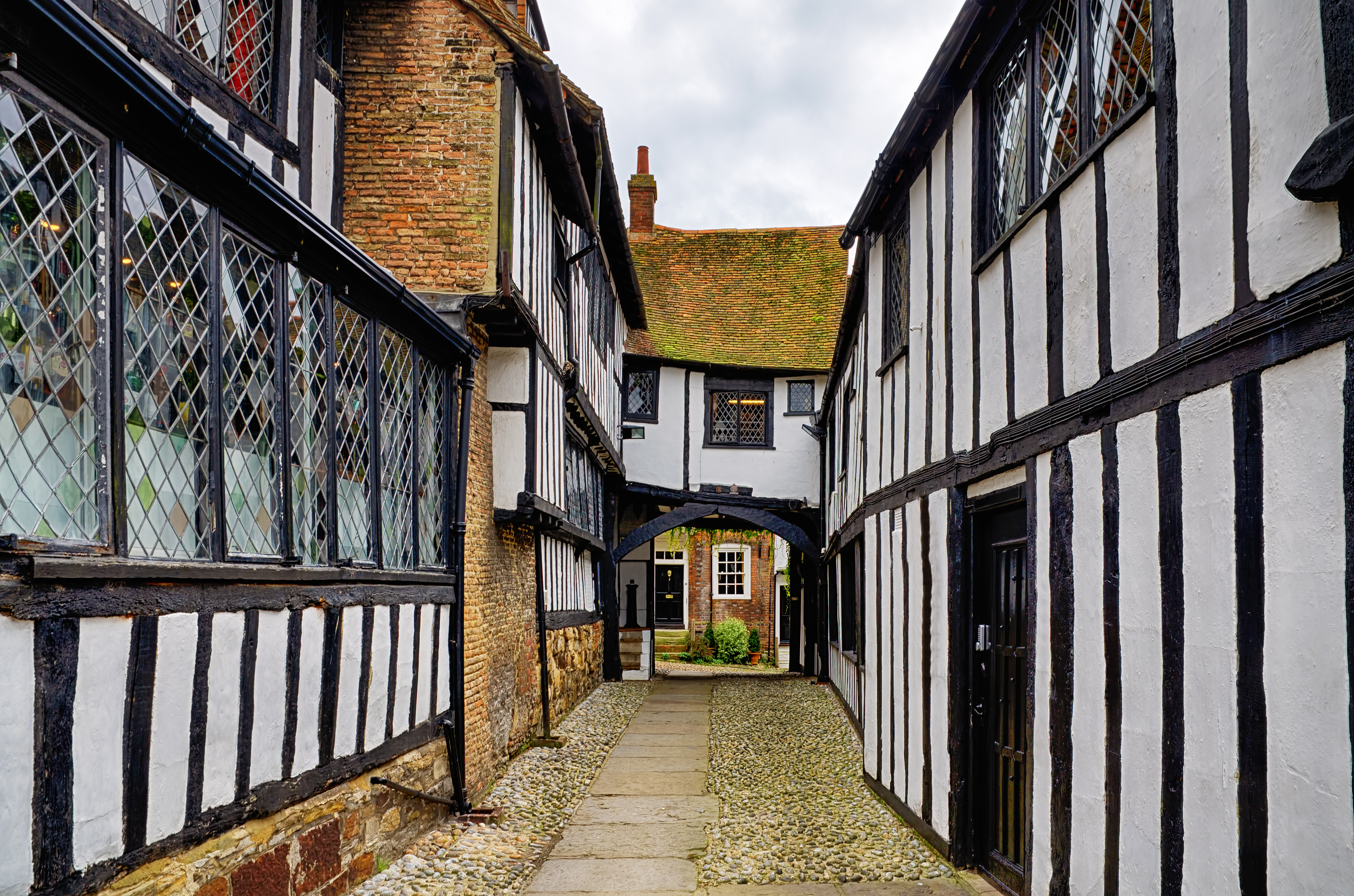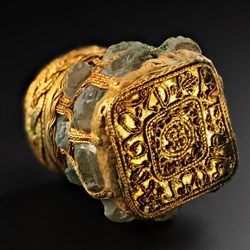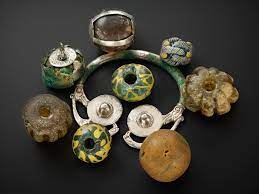Alfred the Great Saves England
Alfred the Great, birth 849 AD/crowned, 871 at age 22 /death 899 at age 50/consort, Ealhswith
House: Wessex/Father, Æthelwulf, King of Wessex/Mother, Osburh
Children: Æthelflæd, Lady of the Mercians; Edward the Elder, King of the Anglo-Saxons; Æthelgifu, Abbess of Shaftesbury; Ælfthryth, Countess of Flanders; Æthelweard
Reign: King of the West Saxons, 871-886/King of the Anglo-Saxons, 886-899
When Alfred ascended the throne in 871, one dynasty, the House of Wessex, emerged to create a monarchy that has been an unbroken line from the ninth century to the current Queen Elizabeth II. The supremacy of the House of Wessex was in part due to their ability to successfully battle the increasing Viking raids from Denmark. Since the 790s, the Vikings had been using fast mobile armies numbering thousands of men in shallow-draught longships to raid the coasts and inland waters of England.
Few written reports exist today describing the battles between the militia of Alfred, King of Wessex at that time, and Danish leaders. What we do know is that Alfred was victorious in defending and maintaining control over Wessex. This has been gleaned from two sources. One is Life of King Alfred, a biography of King Alfred written in 893 by a scholar named Asser, a Welsh monk whom Alfred recruited for his court. This is our main source of information about Alfred’s life and provides more information about Alfred than is known about any other early English ruler. The other, Treaty of Alfred and Guthrum, describes the resolution of the power struggle between Alfred and surrendering Danish King Guthrum at the Battle at Edington in 878. Drawn up in 879, it is still in existence, held at Corpus Christi College, Cambridge. Although fighting continued between the Vikings and the Anglo-Saxons, this treaty marked the end to a war that seemed lost until Alfred ascended the throne.
According to Treaty of Alfred and Guthrum, when Alfred conquered Guthrum, they agreed to divide England between them. The northeast was ruled by Guthrum, and at that time, called Danelaw.[1] The southwest, called Wessex was ruled by Alfred. London, in particular, remained on the “English” side. The text also suggests that Scandinavian settlement was already taking place in East Anglia. Before the treaty was agreed, Guthrum had left his base at Cirencester and taken his army back to East Anglia, where they settled and “shared out the land.”
When Alfred was not meeting heavy military responsibilities (e.g., reorganizing the army, establishing a navy, developing a network of buhrs and roads to use against attackers), he spent his time not only improving his own knowledge but promoting educational reform throughout his kingdom. He improved the justice system, reformed coinage, and reestablished the Roman city of London which had a crucial location on the river Thames and therefore had been ruined by years of Viking attack. He began to foster the idea of English nationalism, provide an early example of an accessible Christian education, and provide legal protection for slaves who had, until his reign, “been sold, beaten or even killed” at their master’s whim. He offers many lessons for our own generation, not the least of which is what he learned by descending from prosperity to poverty and then ascending back to prosperity. In Alfred’s own words,
“In the midst of prosperity, the mind is elated, and in prosperity a man forgets himself; in hardship he is forced to reflect on himself, even though he be unwilling. In prosperity a man often destroys the good he has done; amidst the difficulties he often repairs what he long since did in the way of wickedness.”
[1]The term ‘the Danelaw’ does not appear in sources until the early eleventh century. This area of Danish settlement was split into political zones and governed by many kings and also jarls and holds, who were the equivalent of ealdormen and king’s thegns. Source: The Anglo-Saxons by Marc Morris.

